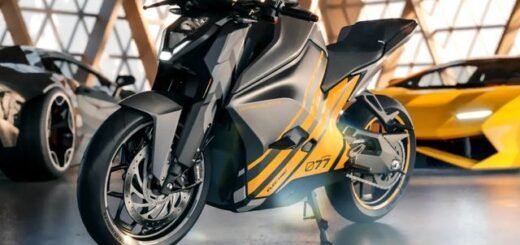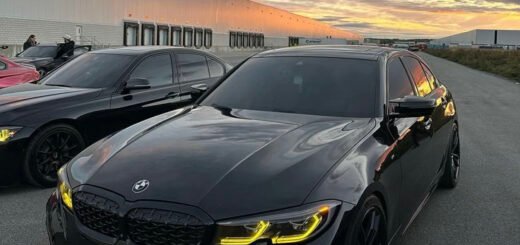Tesla Cybertruck: Hype or Reality?

Tesla revealed the Cybertruck in November 2019, and since then, it has sparked endless debates across tech, auto, and investment communities. Elon Musk stood on stage with a vehicle that looked like it came straight out of a sci-fi movie. The sharp, angular body design, stainless steel exoskeleton, and claims of bulletproof durability stunned the audience and internet alike. But more than five years later, people still ask—was it just hype, or has Tesla delivered a game-changing product?
The Cybertruck made headlines from day one, not just for its appearance but for the ambitious promises that accompanied it. Musk declared that the truck could outperform a Porsche 911 in acceleration and tow like a Ford F-150. He promised advanced features, including self-leveling suspension, 500+ miles of range, and complete off-road readiness. Pre-orders skyrocketed within days, reportedly crossing the 250,000 mark in less than a week.
Yet Tesla did not launch the truck on time. Originally scheduled for production in late 2021, the Cybertruck faced delays due to multiple factors—supply chain disruptions, the COVID-19 pandemic, and the complexity of engineering a radically new product. Tesla had never built a vehicle with an exoskeleton before, and this required rethinking many standard manufacturing processes. Engineers worked to refine the unibody design, optimize battery systems, and ensure structural integrity.
By the end of 2023, Tesla started limited production at its Gigafactory in Texas. Elon Musk handed over the first few models during a high-profile delivery event. The initial customers, mostly long-time Tesla fans or influencers, showcased the vehicle across social media. The reviews split into two camps—some praised its raw power and unique design, while others questioned its practicality.
The Cybertruck’s design continues to polarize public opinion. Tesla took a bold risk by breaking away from traditional truck aesthetics. The angular body panels and stainless steel surface do not support curves or complex paint finishes. This decision gives the vehicle a distinctive appearance but also limits customizations. Many consumers admire the futuristic look, while others consider it too radical for mass adoption.
Performance-wise, Tesla backed its talk with numbers. The tri-motor version can reportedly accelerate from 0 to 60 mph in less than 2.9 seconds, a staggering figure for a pickup truck. Early tests have confirmed strong torque, smooth handling, and impressive off-road capability. The towing capacity stands at around 11,000 pounds, putting it in direct competition with other top-tier trucks.
However, Tesla has not yet delivered the version with the promised 500-mile range. As of early 2025, the available variants offer approximately 340 miles per charge. While this still surpasses many competitors in the electric truck segment, some potential buyers feel disappointed by the shortfall. The lack of a true long-range version prevents the Cybertruck from serving certain commercial and rural users effectively.
Tesla also introduced a unique user interface within the Cybertruck. The minimalist interior, massive touchscreen, and yoke-style steering wheel reflect Tesla’s standard design language. The company emphasizes software-driven functionality, including over-the-air updates and AI-based driver assistance features. These updates keep the vehicle fresh and improve features without requiring hardware modifications.
From a commercial perspective, Tesla views the Cybertruck as a statement of engineering prowess. The company never intended it to serve as a direct replacement for conventional trucks. Instead, it markets the product as a high-performance, tech-first alternative for users who prioritize innovation over tradition. Tesla expects early adopters, tech enthusiasts, and brand loyalists to form the initial customer base.
Critics argue that the Cybertruck lacks mainstream appeal. Traditional truck buyers prioritize practicality, bed space, ease of loading, and reliability in harsh environments. The Cybertruck’s unique structure complicates some of these aspects. For example, the high bed walls and integrated tailgate reduce the ease of loading cargo. Additionally, the sharp exterior edges raise safety and regulatory concerns in some countries.
Price remains another point of contention. At launch, Musk hinted at a starting price under $40,000. By 2025, the base model costs closer to $60,000, making it less accessible than initially anticipated. Tesla attributes the price increase to inflation, rising material costs, and added technology. While the price still undercuts competitors like the Rivian R1T and GMC Hummer EV, it no longer qualifies as the “affordable” electric truck Musk once envisioned.
Despite these criticisms, Tesla continues to generate enormous interest in the Cybertruck. Waitlists remain long, and new customers place reservations daily. The vehicle commands media attention with every update, and Tesla leverages this publicity to maintain market momentum. Few products in automotive history have sustained this level of attention for half a decade.
Looking at the bigger picture, Tesla has succeeded in redefining expectations for electric trucks. The Cybertruck forced legacy automakers to speed up their EV truck plans. Ford launched the F-150 Lightning. General Motors revived the Hummer as an electric beast. Even startups like Rivian gained traction by aligning with the electric future Tesla helped to shape.
Tesla’s competitors now take design risks more seriously. Innovation around materials, powertrain, and vehicle software has accelerated across the industry. In many ways, Tesla does not need the Cybertruck to dominate in sales. It already disrupted the market by showing what electric trucks can look like and how they can perform.
So, is the Cybertruck hype or reality? The answer may lie somewhere in the middle. Tesla built a real, functional product that delivers on many of its bold claims. It broke design barriers, delivered strong performance, and retained the brand’s core values. But the product also carries limitations—price creep, production delays, and controversial styling. It may never become a mainstream truck, but it doesn’t need to.
Tesla used the Cybertruck to capture attention, drive innovation, and reshape the electric vehicle narrative. The hype played a role, but the reality includes a vehicle that challenges industry norms and excites future-forward consumers. For now, the Cybertruck exists as both a symbol and a machine—something that looks like science fiction but moves like high-performance engineering.
The final verdict? Tesla turned hype into hardware. And in doing so, it gave the world a Cybertruck that refuses to go unnoticed.













